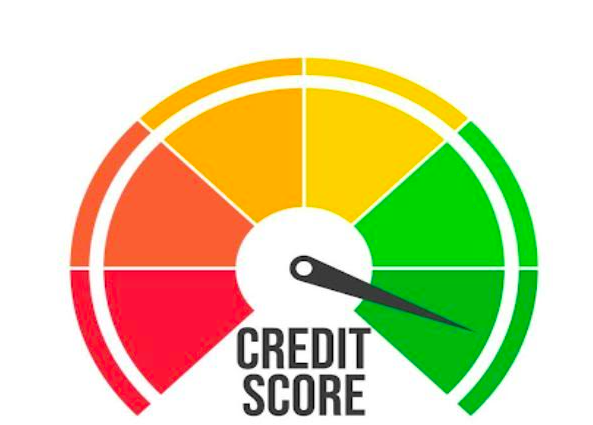The landscape of payment cards is diverse, with RuPay, Visa, and Mastercard emerging as prominent players. Understanding the distinctions is crucial for users. RuPay, India’s domestic card network, competes with international giants Visa and Mastercard. While all facilitate electronic transactions, differences in acceptance, issuing banks, and associated benefits set them apart. This introduction delves into the unique features of RuPay, offering insights into its differences from Visa and Mastercard, enabling individuals to make informed choices based on their preferences and regional affiliations.
Introduction: The Card Conundrum
In the dynamic world of electronic payments, the choices between RuPay, Visa, and Mastercard introduce a nuanced conundrum for consumers. While each serves the fundamental purpose of facilitating transactions, the distinctions are significant and warrant careful consideration. At the heart of this card conundrum is RuPay, India’s indigenous card network, standing in competition with the globally recognized Visa and Mastercard.
This introduction sets the stage for an exploration into the unique characteristics that differentiate these payment cards. From the geographical focus and issuing banks to global acceptance and transaction costs, understanding these nuances becomes pivotal for users seeking the most suitable card based on their preferences, regional affiliations, and the associated benefits offered by each network. As we delve into this card conundrum, users can navigate the intricacies of RuPay, Visa, and Mastercard to make informed choices aligned with their financial preferences and global accessibility needs.
The Origins and Reach of RuPay
Rooted in India’s economic landscape, RuPay stands as a testament to the nation’s push for financial inclusion and self-reliance. Launched by the National Payments Corporation of India (NPCI), RuPay emerged in 2012 as a domestic card network with a mission to cater to the diverse needs of Indian consumers. Unlike its international counterparts, Visa and Mastercard, RuPay is uniquely aligned with Indian banks and financial institutions, fostering a symbiotic relationship that contributes to the nation’s economic growth.
RuPay’s origin lies in a vision to create a card payment system that caters specifically to the Indian market, offering a cost-effective and secure alternative. The network has steadily expanded its reach, gaining prominence within the country’s payment ecosystem. Its focus on providing affordable electronic payment solutions, especially in rural areas, has played a pivotal role in advancing financial inclusivity.
Global Giants: Visa and Mastercard
Visa and Mastercard, two behemoths in the global financial landscape, have become synonymous with international transactions, offering unparalleled convenience and widespread acceptance. Founded in the late 20th century, both networks operate on a global scale, connecting millions of merchants and users across various countries.
Visa, established in 1958, boasts a vast network, facilitating secure and seamless transactions in over 200 countries. Its ubiquity in the international market has made it a preferred choice for many, with a broad range of cards catering to diverse consumer needs. Mastercard, founded in 1966, is another global giant, providing a comprehensive suite of payment solutions. With a presence in over 210 countries, Mastercard’s extensive network ensures that users can engage in transactions almost anywhere in the world.
Acceptance and Accessibility: A Comparative Analysis
Acceptance and accessibility are pivotal considerations when comparing RuPay, Visa, and Mastercard, as they directly impact users’ ability to engage in seamless transactions across diverse platforms and locations.
RuPay, with its roots firmly embedded in India, has gained significant traction within the country. While its acceptance is widespread in India, it may face limitations internationally due to its domestic orientation. However, efforts by the National Payments Corporation of India (NPCI) to forge global partnerships are expanding RuPay’s global footprint.
On the other hand, Visa and Mastercard, being global giants, enjoy unparalleled international acceptance. Their extensive networks enable users to transact across a multitude of countries and establishments. From online purchases to international travel, Visa and Mastercard’s ubiquity makes them go-to choices for those seeking convenience and flexibility beyond national borders.
Fee structures and potential cost savings for users
Comparing the fee structures of RuPay, Visa, and Mastercard is integral to making informed decisions regarding potential cost savings for users. RuPay, as a domestic network, is often associated with lower transaction fees, making it a cost-effective choice for users primarily engaged in domestic transactions. This affordability aligns with the network’s focus on promoting financial inclusivity.
Visa and Mastercard, as global players, may involve varying fee structures depending on the issuing bank and the nature of the transaction. While they offer extensive international acceptance, users may encounter additional fees for cross-border transactions or currency conversions. However, the diverse range of card offerings from these networks provides users with flexibility in choosing options that suit their budget and usage patterns.
Pros and Cons: Making an Informed Choice
Visa and Mastercard, being global giants, offer unparalleled international acceptance, making them ideal for frequent travelers. Their extensive networks, diverse card offerings, and innovative features contribute to their popularity. However, the potential drawbacks include varying fee structures, particularly for cross-border transactions, which may impact cost-conscious users.
RuPay’s domestic focus, lower fees, and support for government initiatives like Jan Dhan Yojana make it appealing for those prioritizing affordability and national financial inclusion. Visa and Mastercard, while excelling in global transactions, are favored by users seeking convenience, a wide range of perks, and seamless international travel experiences. An informed choice requires a careful evaluation of individual preferences, usage patterns, and financial goals, weighing the strengths and limitations of each network for a tailored and strategic approach to electronic payments.
Conclusion
In conclusion, the choice between RuPay, Visa, and Mastercard hinges on individual priorities and usage patterns. RuPay’s affordability and focus on domestic transactions make it suitable for those prioritizing national financial inclusivity. Visa and Mastercard, with their global acceptance, cater to users with extensive international transaction needs. The decision must align with factors such as cost considerations, preferred perks, and geographical usage. As users navigate this decision-making process, understanding the nuanced pros and cons of each network ensures a tailored and informed choice, optimizing electronic payment experiences based on individual preferences and financial objectives.
Also Read:
- Fixed Deposits vs Money Market Funds ; Which One is Right for You?
- International Mutual Funds in India- Should you Invest?
- Should you Invest in retirement savings fund?
- Potential Risk Matrix in Debt Mutual funds- How to Interpret?

Hello, I am Tanisha Kriplani, graduated in computer science from Delhi University. I am passionate about web content writing and have a strong interest in Data Analytics and Data Engineering.











